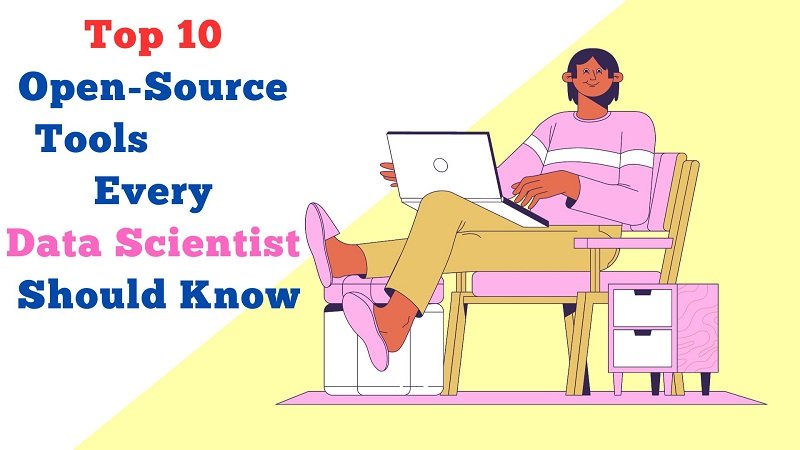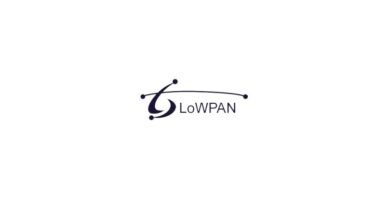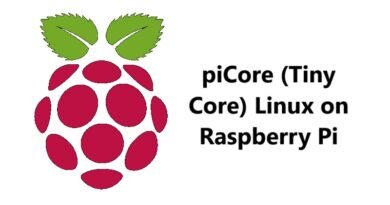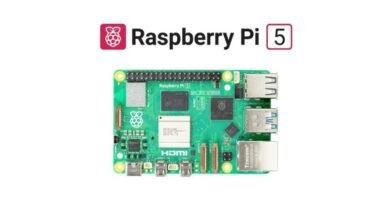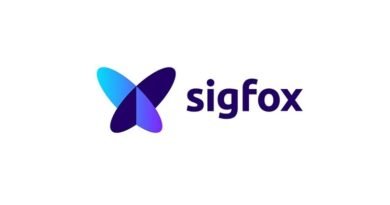Top 10 Open-Source Tools Every Data Scientist Should Know
Data science has evolved into a crucial field in today’s data-driven world. Whether you are a beginner or an experienced data scientist, having a strong set of tools is essential for effective data analysis, machine learning, and data visualization. In this article, we will explore the Top 10 Open-Source Tools Every Data Scientist Should Know. Open-source tools, in particular, have become incredibly popular in the data science community due to their flexibility, community support, and cost-effectiveness.
Top 10 Open-Source Tools For Data Scientists
Recent years have seen tremendous growth in the field of data science, and open-source technologies have been essential to this quick development. To gather, examine, and draw conclusions from enormous datasets, data scientists use a variety of tools and platforms. Open-source software has changed the game by making it possible for data professionals to operate effectively, creatively, and economically.
Data science tools are application software or frameworks that help data science professionals to perform various data science tasks like analysis, cleansing, visualization, mining, reporting, and filtering of data. Each of these tools comes with a set of some of these usages. The survey also found that 91.9% of the responding organizations got measurable business value from their data and analytics investments in 2022 and that 98.2% expect their planned 2023 spending to pay off. Many strategic analytics goals remain aspirational, though: Only 40.8% of the respondents said they’re competing on data and analytics, and just 23.9% have created a data-driven organization.
As data science teams build their portfolios of enabling technologies to help achieve those analytics goals, they can choose from a wide selection of tools and platforms.
Jupyter Notebooks
Jupyter Notebooks are a fantastic open-source tool for interactive data analysis. They support multiple programming languages, including Python and R, and allow you to create and share documents containing live code, equations, visualizations, and narrative text. This tool is indispensable for exploratory data analysis and sharing results with others.
Python
Python is the undisputed king of programming languages in the data science world. Its simplicity, versatility, and extensive libraries, such as NumPy, Pandas, and Matplotlib, make it an ideal choice for data manipulation, analysis, and visualization. Additionally, Python has a strong ecosystem for machine learning, including popular libraries like TensorFlow, PyTorch, and scikit-learn.
R
R is another powerful open-source programming language tailored for statistical computing and data analysis. It excels in data visualization, making it a favorite among statisticians and data scientists. The vast collection of packages, such as ggplot2 and dplyr, make R a compelling choice for those looking to create compelling data visualizations.
Pandas
Pandas is a Python library that provides easy-to-use data structures and data analysis tools. Data scientists often use Pandas to manipulate and analyze data, as it offers powerful features for working with structured data, including dataframes.
Scikit-Learn
Scikit-Learn is a popular Python library for machine learning. It provides a wide range of machine learning algorithms, data preprocessing tools, and model evaluation techniques, making it a valuable resource for data scientists involved in predictive modeling and classification tasks.
Matplotlib and Seaborn
Data visualization is a crucial part of data science, and Matplotlib and Seaborn are go-to libraries for creating stunning visualizations in Python. While Matplotlib provides fine-grained control over chart creation. Seaborn simplifies the process by offering a high-level interface and a plethora of built-in themes.
TensorFlow and PyTorch
For deep learning enthusiasts, TensorFlow and PyTorch are indispensable open-source tools. Developed by Google and Facebook, respectively, these libraries have transformed the deep learning landscape. They provide a comprehensive set of tools for building and training neural networks.
Apache Spark
Apache Spark is a powerful open-source data processing framework. It’s ideal for large-scale data processing and analytics, offering APIs in various programming languages, including Python, Scala, and Java. Spark’s ability to process data in memory and distribute computations across clusters makes it an excellent choice for big data analytics.
SQL
Structured Query Language (SQL) is a domain-specific language for managing and querying relational databases. While not a traditional open-source tool, SQL is essential for data scientists, as it enables them to retrieve, manipulate, and analyze data stored in relational databases. There are open-source database systems like MySQL, PostgreSQL, and SQLite that work seamlessly with SQL.
Git and GitHub
Version control is essential for tracking changes in your code, collaborating with others, and managing projects efficiently. Git, an open-source distributed version control system, is a must-know tool for data scientists. GitHub, an open-source platform built around Git, provides a collaborative environment for sharing and collaborating on data science projects.
Frequently Asked Questions
Here are some FAQs related to these topics:
What open-source tools most used for data science?
Popular open-source tools for data science include Python (with libraries like NumPy, Pandas, and Matplotlib). Jupyter notebooks for interactive coding, scikit-learn for machine learning, TensorFlow and PyTorch for deep learning, and R for statistical analysis. Tools like Apache Hadoop and Spark are also essential for big data processing.
What tools should data scientist use?
Data scientists should use a combination of tools, including programming languages like Python and R, libraries like NumPy, Pandas, and scikit-learn, Jupyter notebooks for analysis, data visualization tools like Matplotlib and Tableau, machine learning frameworks such as TensorFlow, data storage systems, and databases like SQL, and big data tools like Hadoop and Spark. Collaboration and version control tools are also important for team projects.
What is SAS in data science?
SAS (Statistical Analysis System) is a software suite used in data science for advanced analytics, data management, and business intelligence. It offers tools for data manipulation, statistical analysis, and machine learning. SAS is known for its reliability and versatility, making it valuable in various industries for data analysis and decision-making.
Does a data scientist code?
Yes, data scientists typically code. They use programming languages like Python, R, and SQL to collect, clean, analyze, and visualize data. Coding is essential for building and implementing machine learning models, conducting statistical analysis, and creating data-driven solutions in the field of data science.
Does data science have a future?
Yes, data science has a promising future. As data volumes continue to grow, businesses and industries rely on data scientists to extract valuable insights and make data-driven decisions. Advances in AI and machine learning further solidify its importance in solving complex problems and creating innovative solutions.
Conclusion
These top 10 open-source tools are indispensable for any data scientist. Whether you’re just starting your journey or have years of experience. They empower you to manipulate data, build machine learning models, create stunning visualizations, and collaborate with peers effectively. Staying current with these tools and their latest developments is crucial in the ever-evolving field of data science. By mastering these open-source tools, you can unlock your potential and drive insights from data to make informed decisions in a data-driven world.
